Under current market conditions, one of the core drivers providing for sustainable growth of the economy of Russia is the so called National Innovation System (NIS) that is designed to upgrade the country’s economy and improve its business climate, thus assuring its global competitiveness on a higher level.
The “Strategy of the Innovation Development in the Russian Federation till 2020″ (here and after – ‘the Strategy’) that has been adopted by the Government of Russia builds on the “Conception for Long-term Social and Economic Development of the Russian Federation till 2020″ in accordance with the Federal Law “On science and state policy for science and technology”.
The Strategy identifies challenges and threats, sets goals and priorities and prescribes the relevant innovation policy tools. The Strategy also stipulates the long term benchmarks of the innovation development for the entities of the RF, as well as the benchmarks for investing in theoretical and applied science. [1]
How is this Strategy correlated with the global trends and what is Russia’s standing on the world arena of innovation? In order to answer these questions, let’s look at some macro statistic indicators.
The accepted practice is to assess the performance of innovation policy using the Innovation Activity Index, the leaders being Germany (79.3), Brazil (76.0), Canada (75.8). Russia is currently lagging behind with the IAI of 10.3 (See Fig. 1). Such a low index suggests that the innovation support systems on the state level are underdeveloped and that firms are passive in innovation development.
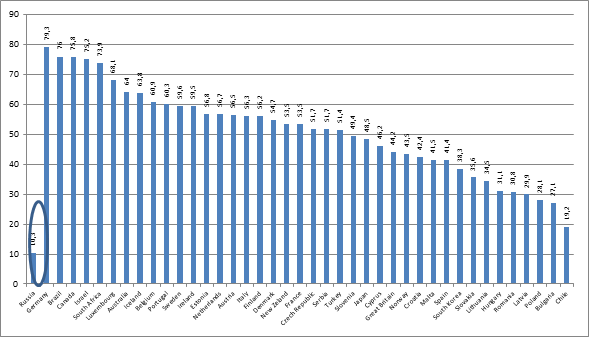
Fig. 1. Level of IAI, %, 2012. Sources: Eurostat and national statistic agencies
Innovation development is also characterized by a number of other, more specific, indicators. Perhaps, the most prominent of them is the level of private and public investments (internal R&D costs in the country). In the Strategy funding innovations from the state budget is declared to be a priority, but in fact, looking at statistics, it’s evident that Russia fails to be a leader in this. In 2013 it is the USA, China and Japan that lead the rating. Though, it’s worth noting the positive tendency: since 1991, this indicator has grown, which testifies to a gradual, though slow, realization of the Government intentions (see Fig. 2).
One of the barriers for the innovation development in Russia is uneven allocation of resources by its Government: for instance, the new ‘science hub’ that is being built in Skolkovo (our future “Silicon Valley”) gets massive financial support, while other ‘naukorads‘ are desolated. Their infrastructure is very basic and the equipment is obsolete, dating back to USSR time. Such ‘naukograds’ are downsized, both in premises and personnel.
The leading position of the USA in 2013 may be partly explained by the fact that in that country the R&D function is largely assumed by numerous universities that have R&D centers and schemes (mechanisms) for financing them integrated into their infrastructure.
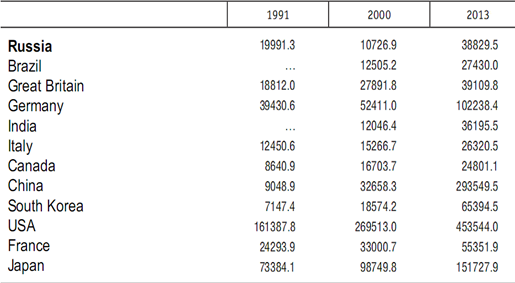
Fig.2. Internal R&D investments by countries
(mln. USD; based on national PPC).
If we look at the same indicator , but expressed not in absolute terms, but as a percentage of GDP, we can see that the top position belongs to South Korea ( 4.36%) and Japan (3.35%), while Russia with its 1.12 % is far from leading again (See Fig.3).
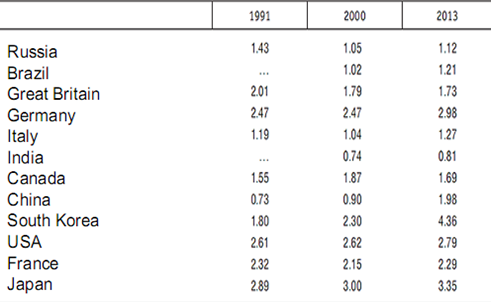
Fig.3. Internal R&D investment , by countries, ( % of GDP).
Another factor that has an important impact is availability of appropriate Human Capital.– i.e. expert professionals engaged in R&D. [4] In this aspect China unquestionably leads the list. Thus, we can see a significant numerical increase: within the period of 9 years between 1994 and 2013, R&D personnel has grown three times, which is in full accordance with the strategy designed by the Communist Party of China. The country is to transform into a foremost superpower through innovation and technology development. (regretfully,) At the same time, in Russia the number of people, engaged in R&D, is decreasing (See Fig.4).
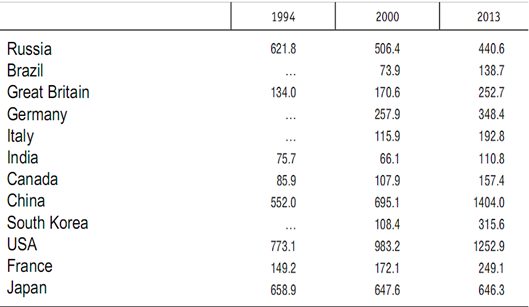
Fig.4. Personnel, engaged in R&D, by countries
(thousand person-years; in full employment equivalent)
Considering this down-going trend in Russia more in-depth, it must be noted that in the R&D sector that is funded by the State there have been no radical changes within more than 10 years, while the R&D human resources employed in the private sector have decreased three times; in the sector of higher education and NGO – two times. As we can see, statistics brutally contradicts the beautiful verbal declarations that we hear from our politicians (Fig.5).
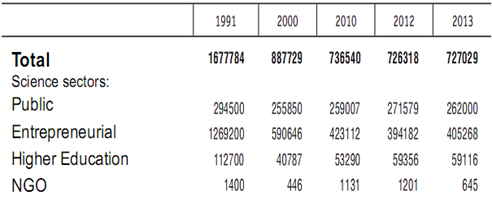
Fig.5. Personnel engaged in R&D, by science sectors (person.)
The brief analysis suggested here leads to the following thought-provoking observations and conclusions. In innovation activity Russian companies dramatically stand behind the leading countries in most indicators. Russian economy creates low demand for innovations, which is conditioned by its ineffective structure. The dominating approach of buying state-of-the-art equipment made abroad jeopardizes the invention, development and implementation of Russia’s own innovative technologies. Neither public, nor private sectors are motivated enough to express robust interest in innovation endeavors. All of the above points at the compelling need to update the previous innovation policy and strategies, shifting from rendering growing bulk support of the innovation as a total to focusing on tackling the root problems, critical for the future of Russia.
References
- «Стратегия инновационного развития Российской Федерации на период до 2020 года. Утверждена распоряжением Правительства Российской Федерации от 8 декабря 2011 г.» (URL:: http://www.consultant.rudocumentcons_doc_LAW_123444 (дата обращения: 19.01.2016). (Strategy of the Innovation Development in the Russian Federation till 2020 Approved by the RF Government on the 8th of December, 2011).
- Индикаторы инновационной деятельности: 2014: статистический сборник . М.: Национальный исследовательский университет «Высшая школа экономики», 2014, стр. 444-468. (Indicators of innovation activity provided by NRUHSE): 2014: statistical collection. – Moscow: National Research University, Higher School of Economics , 2014, рp. 444 – 468.
- Наука. Инновации. Информационное общество: 2014: краткий статистический сборник. М.: Национальный исследовательский университет «Высшая школа экономики», стр. 28-31. (the research on “Science. Innovations. Information society” published by NRUHSE: 2014: brief statistical digest – Moscow: The National Research University Higher School of Economics, р. 28-31.
- Полетаев В.Э. Бизнес в России: инновации и модернизационный проект: Монография. М.: ИНФРА-М, 2013 С. 463-486, 507. (Monograph by Poletaev V.E. ‘Business in Russia: innovations and modernization project: Monograph. – М.: INFRA-М, 2013. p. 485-486, 507.)
